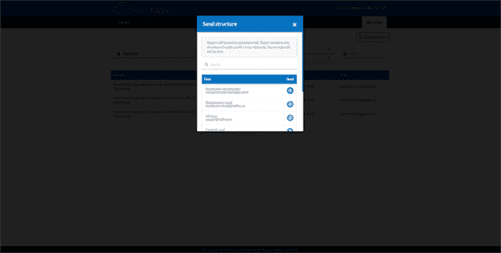Expositdesigners are experienced in creating quality UI&UX design for Healthcare solutions focusing on patient centricity and industry-specific processes. Thus, Healthcare apps should be fast and deliver the main message to users first. While a lot of attention is focused on functionality, the role ofUI & UX designin healthcare software often remains undervalued. However, design can help to avoid life-threatening medical errors and improve patient centricity.

In addition, AI technology might enable individualized health predictions and turn the health system upside down. AI is predicted to cut annual US healthcare costs by $150 billion in 2026. VR is also expected to significantly impact psychological treatments. In this video, VR pioneer Mel Slater explains how designers will have a pivotal role in increasing the impact of VR to help improve mental health.
Use the design phase to iterate faster and at a lower cost
Intuitive icons and images increases patient engagement on site/app and offer better interaction. Illustrations too develop a positive impression, plus high resolution images are visually appealing. Consider pairing icons and images with a suitable text as it may mislead patients.
Alternatively,User experience, UX, is the takeaway from the entire experience for the individual interacting with that product or service. Considering the healthcare UX trends, some of the examples are as follows. A family-owned investment company, Ocean Investments supports the efforts of early-stage technology innovators in cybersecurity, health tech and real estate. When you study your users under UX design in healthcare a microscope, you can pick what’s relevant to your customers and make better service offerings. In this image, you can see the glucose sensor and the app where patients can visualize their glucose levels data. Additionally, accessibility doesn’t only benefit the older population but also the millions of users living with some form of visual or auditory impairment, cognitive challenge, etc.
🤖 VR and AI
This means taking into account text size, color variations, simple navigation, etc. In addition, accessibility benefits millions of users who live with some form of visual or hearing impairment, cognitive problems, etc. UX in healthcare is the design of a user’s interaction with a healthcare product or service, such as electronic health records, disease management apps, or doctor appointment scheduling apps. In general, UX/UI design in healthcare is not too different from UX/UI design in other industries. It is aimed at creating value for users and attracting and retaining users.

When dealing with digital healthcare technologies, it is important for designers to ensure the privacy and security of healthcare information. If the design is not secure, the patients and healthcare providers will never even think of using it. In healthcare devices and solutions, the best way to achieve this security is to give control to the users and be transparent about the data being gathered. For healthcare technologies, patients or sick individuals are generally the most important audience group.
Why Client Portals are Essential for Utility Companies
Konstantin has worked with mobile apps since 2005 (pre-iPhone era). Helping startups and Fortune 100 companies deliver innovative apps while wearing multiple hats , Konstantin has developed a deep appreciation of mobile and web technologies. Working on robust health care and wellness software like Walker Tracker that spans across several platforms and includes a customer-facing web interface, you can’t overlook a design system. Simply speaking, all design elements must be hierarchically organized into a seamless unified system, taking into account all platforms’ specifics. Following these guidelines ensures that your users feel comfortable working with your digital product and know what to expect based on their previous experiences in an ecosystem.
COVID-19 has forced companies across a variety of sectors, healthcare included, to embrace new technologies that allow work to go on in the new, socially distanced world. However, the global digital health market has been growing steadily even before the pandemic hit. By comprehending to UX principles, healthcare organizations can ensure to optimize their services. This helps to augment quality of patient interaction, productivity, and give a safe access to information that’s HIPAA compliant. Clear navigation is the key to create a dynamic healthcare website/app as patients can move from one section to the next faster and seamlessly.
You are unable to access springboard.com
Patients have much to worry about, and the apps they use should make a positive impression and calm them down. A system of awards, storytelling, and avatars provokes the desire to use the app, complete the tasks, or advance to the next level. The latter may be relevant for fitness apps used by people who need challenges in their everyday life. Modivecare use an interactive voice response system, web portals, and mobile applications through which patients and facilities can book and track healthcare trips. Members can also rate their ride experience to ensure the best service. In the past few years, some relevant changes have taken place in healthcare.
- Extended Reality technologies are ushering in a new era for the healthcare industry.
- The advent of healthcare technologies began producing data at an exponential rate.
- With each passing day, more and more of the modern world’s industries are migrating online.
- Ok, so real quick — UX and UI, despite being often used as a single term, actually mean two different things.
- For example, there are chatbots that help patients book appointments, connect patients with doctors, or collect feedback after a consultation.
As a UX designer, you have the opportunity to help define the future of healthcare. The COVID-19 pandemic has led to an increase in global demand for digital healthcare services. Wearable devices and virtual reality technologies can significantly https://www.globalcloudteam.com/ improve treatment outcomes, and this adds a new challenge for UX designers – to bridge the gap between technology and patients. The design of products and services in the digital environment, however, can be challenging.
UX/UI in healthcare design
When deciding to develop a medical solution, healthcare providers must pay attention not only to its functionality but also to the user experience. At the same time, designers engaged in such projects must understand the specifics of the medical sector and be ready to deal with great responsibility that comes with tasks. Ideally, a telemedicine appointment should resemble a face-to-face visit as closely as possible. So when working with this healthcare technology, designers have to recapture the feeling of real-life experience for patients and doctors. It is crucial to use a robust user interface in a healthcare app, as it ensures convenient information exchange. A healthcare app should allow users to access their reports and treatment information, as well as provide immediate access to medical care.

New devices can monitor vital signs like heart rate and blood pressure. Some gadgets may even detect atrial fibrillation and measure your body mass index to maintain a healthy weight. We are real people, sitting in real offices, solving real business challenges. Talk to us and take the first step towards profitability by letting us set-up and upskill resources you need to automate or simplify the business workflows. To build such a solution, we first need to create its UI/UX which makes a good impact on the lives of caregivers.
A Detailed 2022 Guide to Mobile EHR Applications for Healthcare Developers
Stacy also advises not to get discouraged from working with non-technologists. In fact, these professionals’ rich experience and insights can help improve your team and your product. Collaboration is crucial in order to create an effective digital product in healthcare.